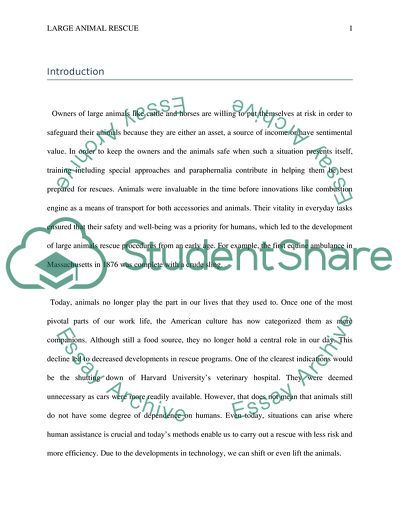Cite this document
(Means of Rescuing Large Animals Research Paper Example | Topics and Well Written Essays - 5000 words, n.d.)
Means of Rescuing Large Animals Research Paper Example | Topics and Well Written Essays - 5000 words. Retrieved from https://studentshare.org/technology/1593492-large-animals-rescue
Means of Rescuing Large Animals Research Paper Example | Topics and Well Written Essays - 5000 words. Retrieved from https://studentshare.org/technology/1593492-large-animals-rescue
(Means of Rescuing Large Animals Research Paper Example | Topics and Well Written Essays - 5000 Words)
Means of Rescuing Large Animals Research Paper Example | Topics and Well Written Essays - 5000 Words. https://studentshare.org/technology/1593492-large-animals-rescue.
Means of Rescuing Large Animals Research Paper Example | Topics and Well Written Essays - 5000 Words. https://studentshare.org/technology/1593492-large-animals-rescue.
“Means of Rescuing Large Animals Research Paper Example | Topics and Well Written Essays - 5000 Words”, n.d. https://studentshare.org/technology/1593492-large-animals-rescue.


